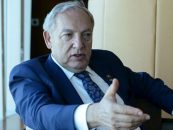
The Investments are Based on a Broad Diversification Across Asset Classes, Countries, and Sectors
An interview with Mrs. Hilde Singsaas, State Secretary, Ministry of Finance of the Norway
AT: What can you say about the role of oil revenues and perspectives in Norwegian economy? Does the increasing oil-gas revenue from these sources impede the diversification of economy? In general, how do you assess the role of The Government Pension Fund in the country’ economy?
The Norwegian fiscal policy guidelines, introduced in 2001, plan for a smooth, gradual increase in the spending of petroleum revenues to a level that can be sustained over time. The rule states that the spending of petroleum revenues, over time should be in line with expected real return on the Fund, estimated at 4 per cent. At the same time, the spending of petroleum revenues in each individual year shall reflect business cycle fluctuations. Consequently, the framework facilitates using the budget to stabilise developments in the Norwegian economy. It also enables a long-term management of the petroleum wealth, thus ensuring that it will also benefit future generations.
The fiscal guidelines also ensure that the petroleum wealth will make a lasting contribution to financing public welfare schemes. The Pension Fund’s contribution to financing welfare schemes is, however, relatively modest compared to tax income from the mainland economy. Looking ahead, the relative importance of the Fund will also decrease due to dwindling oil revenues and general growth in the mainland economy.
AT:The Government Pension Fund’s objective is support government saving to finance the National Insurance Scheme’s expenditure on pensions and support long-term considerations in the use of petroleum revenues. What do you think, does the Foundation is able to comply the objectives in the world market? What impacts do euro crisis has had to the investment policy of the Foundation?
The starting point for the Ministry of Finance’s work on the investment strategy is to achieve high financial returns subject to a moderate level of risk. The Fund has a very long time horizon, so the strategy is based on estimated risk and return in the long term.
The investments are based on a broad diversification across asset classes, countries, and sectors. Equities account for 60 percent, while fixed income and real estate make up the remaining 40 percent. Real estate investments may account for up to 5 percent of total fund assets. The results achieved since so far (3.2 percent real rate of return by yearend 2012) is well within the bounds of uncertainty around the estimated long term real return on 4 per cent.
AT: Which rules are oil adjusted budget deficit policies of the Government Pension Foundation regulated by? What are the level of relationship between state budget and Foundation?
The budget rule states that the use of petroleum revenues, as measured by the structural, non-oil budget deficit, over time should be in line with expected real return on the Fund, estimated at 4 per cent.
See also answer to question 1
AT: In general, what would be your recommendations for State Oil Foundation of Azerbaijan? Maybe some suggestions from management rules of Government Pension Foundation, transparency and accountability policy?
History has shown that rich natural resources can be a curse rather than a blessing. Many countries have experienced that a rapid pace in the spending of resource rents has hampered their economic performance.
In Norway, we have established the Government Pension Fund. The Fund has two main purposes:
• To ensure that not only this generation, but also future generations will benefit from the petroleum wealth.
• To provide the basis for a sound and stable development in the mainland economy.
To achieve this, it is important to separate the current revenue stream from petroleum activities from the spending of these revenues. In line with this, our fiscal policy guideline states that it is only the expected real return on the Fund – estimated at 4 pct. of the fund capital – that is to be spent over time. By only spending the expected real return, the Fund should maintain its value in real terms. Furthermore, the Fund is invested abroad to shelter the domestic economy from overheating.





